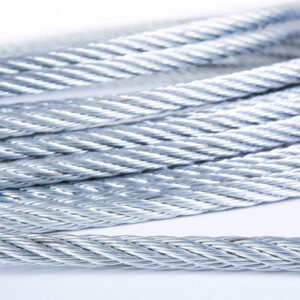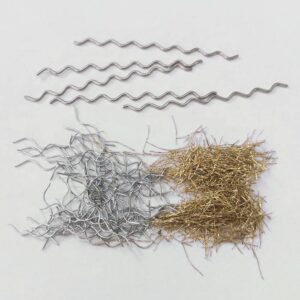Description
Advantages of special coated steel fibers
- Corrosion Resistance: Coating steel fibers with materials such as zinc or epoxy can improve their resistance to corrosion, which is essential for applications in harsh environmental conditions.
- Improved Bonding: The coating on the steel fibers can improve their bonding with the concrete matrix, resulting in a stronger and more durable concrete structure.
- Reduced Cracking: The use of special coated steel fibers in concrete can reduce the occurrence of cracking, which can result in improved durability and longevity of the concrete structure.
- Enhanced Durability: The coating on the steel fibers can improve their resistance to environmental factors such as freeze-thaw cycles, chemical exposure, and abrasion, resulting in a more durable concrete structure.
- Enhanced Fire Resistance: Some coatings can enhance the fire resistance of steel fibers and the concrete in which they are embedded, making them suitable for high-risk applications such as nuclear power plants and military facilities.
Types
There are several types of special coated steel fibers used in concrete, each with unique properties that make them suitable for specific applications. Some of the common types of special coated steel fibers are:
- Zinc-Coated Steel Fibers: These fibers are coated with a layer of zinc to improve their resistance to corrosion. Zinc-coated steel fibers are commonly used in concrete products that are exposed to harsh environmental conditions, such as marine structures.
- Epoxy-Coated Steel Fibers: These fibers are coated with an epoxy material that improves their bonding with the concrete matrix. Epoxy-coated steel fibers are commonly used in shotcrete applications, where high ductility and toughness are required.
- Polypropylene-Coated Steel Fibers: These fibers are coated with polypropylene, a thermoplastic polymer that provides excellent resistance to chemical and environmental factors. Polypropylene-coated steel fibers are commonly used in precast concrete products such as pipes and panels.
- Glass-Coated Steel Fibers: These fibers are coated with a layer of glass, which provides excellent resistance to corrosion and enhances their bonding with the concrete matrix. Glass-coated steel fibers are commonly used in concrete products that require high strength and durability, such as bridge decks and tunnel linings.
- Carbon-Coated Steel Fibers: These fibers are coated with a layer of carbon, which provides excellent resistance to corrosion and enhances their bonding with the concrete matrix. Carbon-coated steel fibers are commonly used in high-performance concrete products, such as high-rise buildings and nuclear power plants.
Application
- Industrial Flooring: Special coated steel fibers are commonly used in industrial flooring applications, where high impact resistance and durability are necessary. These include warehouses, manufacturing facilities, and distribution centers.
- Precast Concrete Products: Special coated steel fibers are used in precast concrete products such as pipes, panels, and beams to enhance their tensile strength and durability.
- Shotcrete: Shotcrete is a method of applying concrete in a rapid and efficient manner. Special coated steel fibers are commonly used in shotcrete applications, where high ductility and toughness are required.
- Tunnel Lining: Specially coated steel fiber-reinforced concrete is used in tunnel lining applications, where the concrete must be able to withstand high pressure and deformations.
- Bridges and Roads: Special coated steel fibers are used in bridge and road construction, where the concrete must be able to withstand heavy loads and exposure to the elements.
- Water Treatment Plants: Special coated steel fibers are used in concrete structures in water treatment plants, where the concrete must be able to withstand exposure to chemicals and corrosive substances.
- Nuclear Power Plants: Special coated steel fiber-reinforced concrete is used in nuclear power plants, where the concrete must be able to withstand high levels of radiation and extreme temperatures.


-300x300.jpg)


Reviews
There are no reviews yet.